Redundancy News RecruitmentPlus
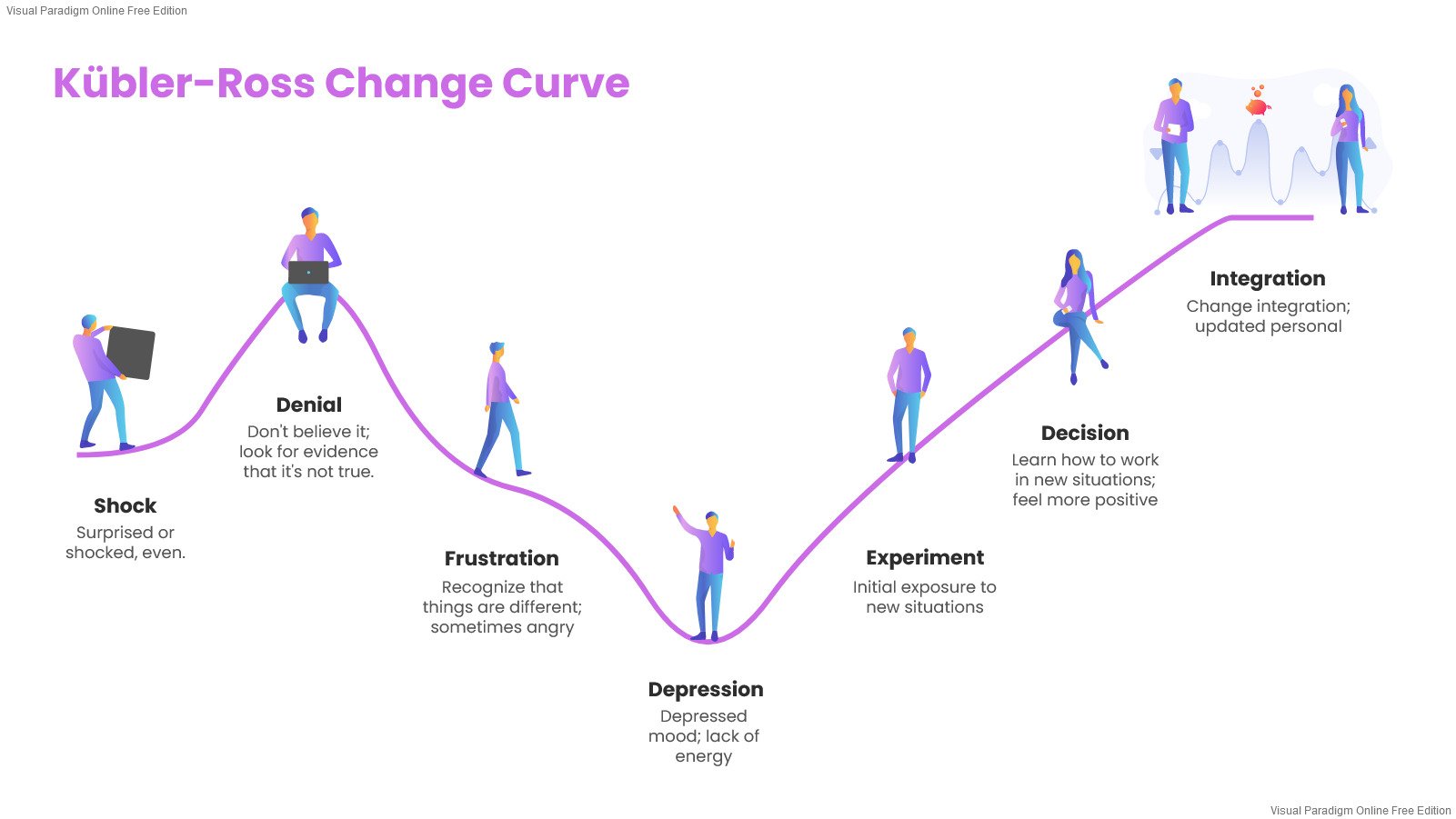.jpg)
Redundancy News RecruitmentPlus
The Kubler-Ross Change Curve can be effectively used by business leaders across the world to help their workforce adapt to change and move towards success. In this article, we explore 1) what is Kubler-Ross Model, 2) the applications of the Kubler-Ross Change Curve, and 3) variations of change curve concepts. WHAT IS KUBLER-ROSS MODEL?

KublerRoss Change Curve, adapted from Optima Training (UK) Limited. Download Scientific Diagram
Our new series of Video tutorials starts with understanding the initial dimensions of change using the famous Elisabeth Kübler-Ross model

KublerRoss Change Curve BIM 4 Housing Blackbox
The Kübler-Ross change curve has been used to analyse change processes in HE by Herrera et al. (2020) and Rodriguez-McClellon (2020), while Malone (2018) uses it to explain students' resistance.
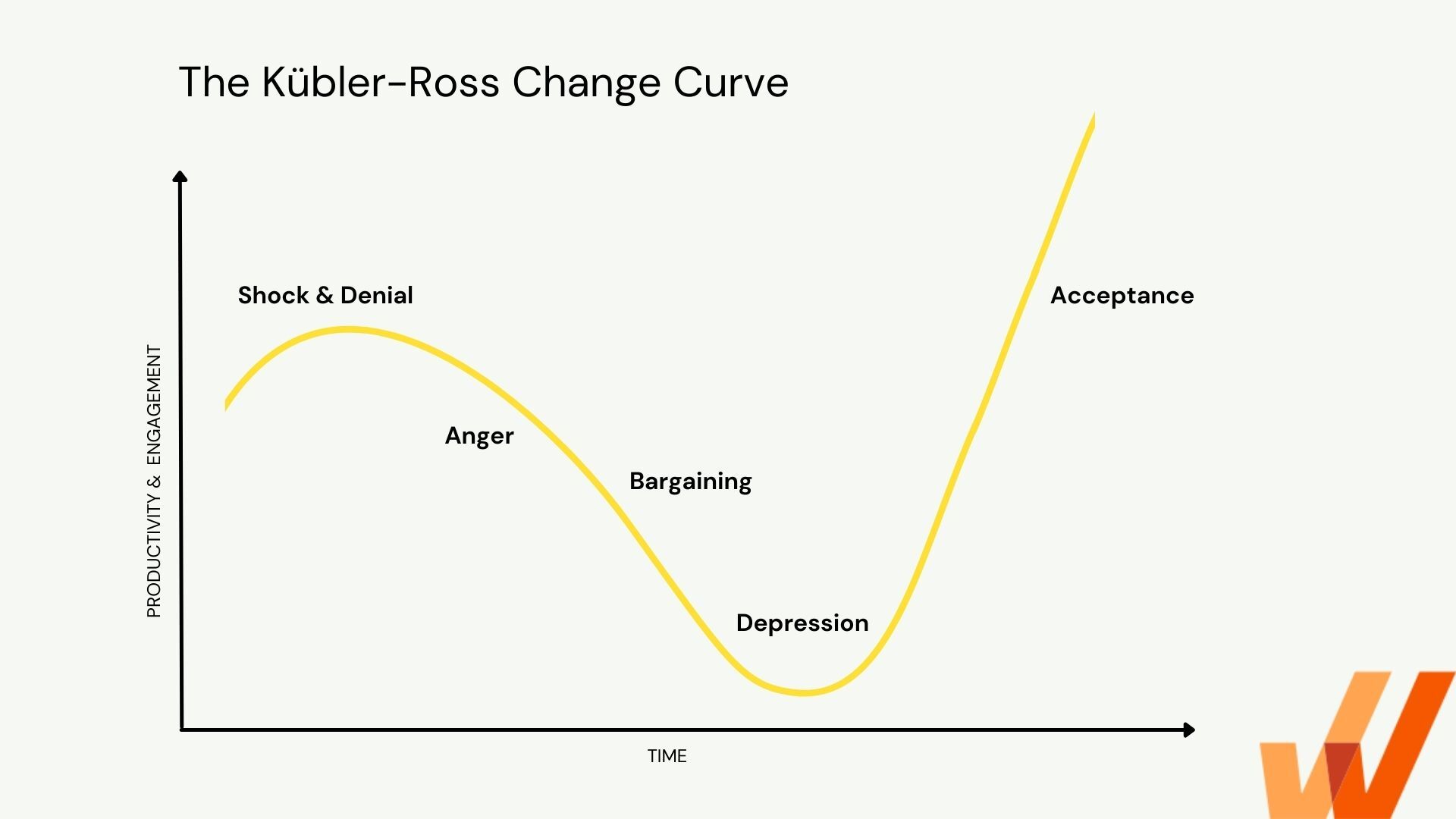
Understanding The Kubler Ross Change Curve Change Management Change My XXX Hot Girl
Kübler-Ross Kurve Elisabeth Kübler-Ross beschrieb in ihrem Buch "On Death and Dying" (Interviews mit Sterbenden, 1969) ein psychologisches Modell für die Stadien extremer Veränderung. Veränderung erfordert Verlust. Sei es positiv (ich ändere meine Einstellung, um etwas zu erreichen) oder negativ (etwas passiert, auf das ich keinen Einfluss habe).
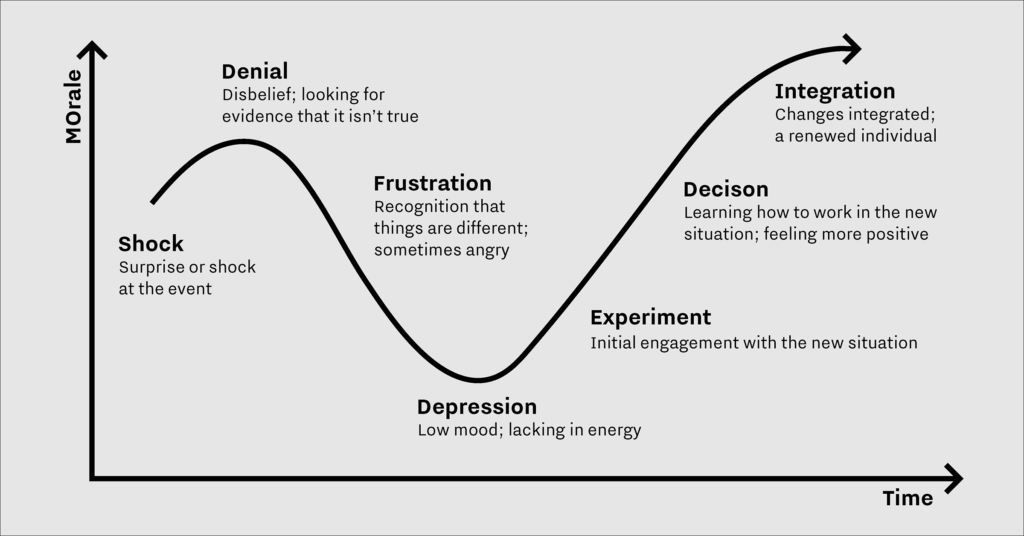
Pivoting in times of painful change Berytech
Advantages of Kubler-Ross Change Curve. Some of the advantages of using this model to understand and manage change include: Predictability: The model provides a predictable framework for how people react to change, which can help managers and leaders anticipate and manage the challenges that come with change. Communication: The model provides a.

KublerRoss Change Curve Cheryl Lynn Eaton
Kübler-Ross, an American psychologist, categorized the psychological reactions and behavioral changes of terminally ill patients from the time they are told of their illness to the time of death into five typical stages: denial, anger, bargaining, depression, and acceptance. Edit this Kubler-Ross Change Curve Template

Free KüblerRoss Change Curve Change Management Tool download for leaders FarWell
Kubler-Ross change curve: Explaining the five stages of grief. The Kubler-Ross change curve outlines the five stages of grief as follows: Denial. Anger. Bargaining. Depression. Acceptance. It's important to note that moving through these stages isn't linear. You may find your employees going back and forth between stages or experiencing.
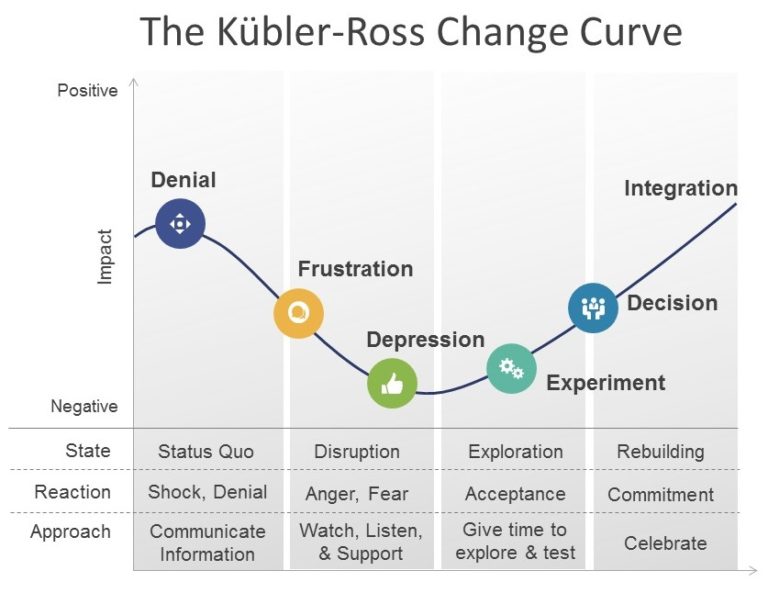
Change Leadership Helping people adapt to a change initiative
What Is the Change Curve? The Change Curve, or Kübler Ross' Change Curve Model, was created by the Swiss-American psychiatrist Elisabeth Kübler-Ross in 1969. It depicts 5-stages of grief denial, anger, bargaining, depression, and acceptance.

Managing Grief, Loss, and Change
Kübler-Ross' Five Stage Change Curve Model is a popular method of understanding the process of change and how people respond to it. The model was developed by Swiss-American psychiatrist Elisabeth Kübler-Ross, who first presented her ideas during a conference in 1969 after working with terminally ill patients for many years.

Blue Change Die Giraffe und die Change Kurve
The change curve is based on a model of the five stages of grief -denial, anger, bargaining, depression and acceptance-originally described by Elisabeth Kübler-Ross in her 1969 book On Death and Dying.
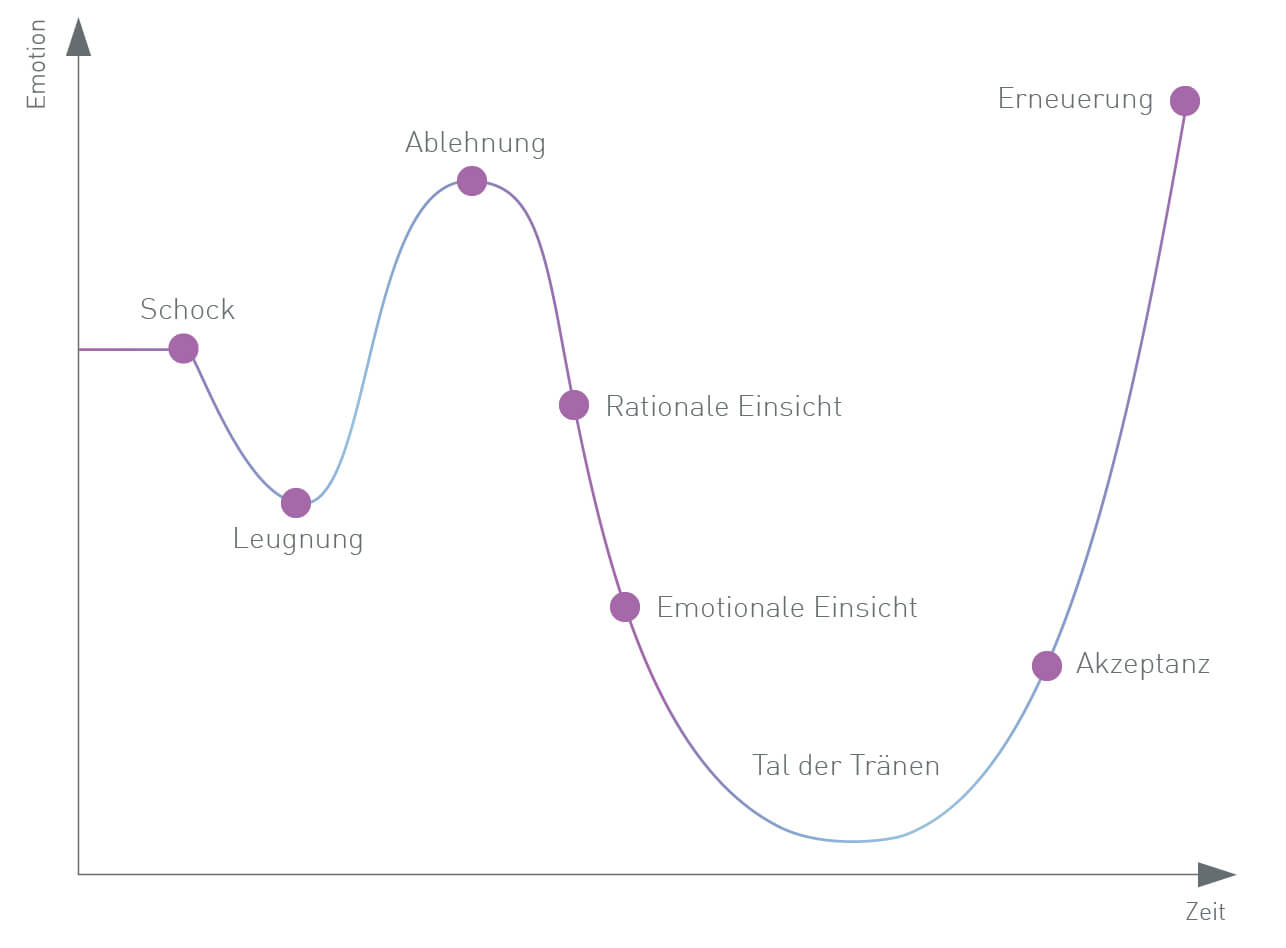
Realitycheck Zeit für ein Zwischenfazit meiner LifeBalance
The Change Curve is derived from the Kübler-Ross model, also known as the Five Stages of Grief. It was originally developed in the 1960s by Swiss-American psychiatrist Elisabeth Kübler-Ross to show how terminally ill patients cope with their impending deaths. However, later the model was modified to depict how people deal with loss and grief.

The KublerRoss Change Curve How 7 Stage Module Affects FastGrowing Startups Kandidate Blog
Elisabeth Kübler-Ross interviewing a woman with leukaemia in Chicago in 1969, with seminar participants behind a one-way mirror. The part of it that stuck in the public imagination was the idea.

Mourning Curve KüblerRoss download link Picture It
The Kubler-Ross Change Curve model has been accepted worldwide to explain the change process. As the basic human emotions experienced during personal loss, change, death, or a dramatic experience remain the same, this model can be applied effectively in such situations. Kübler-Ross Change Curve®
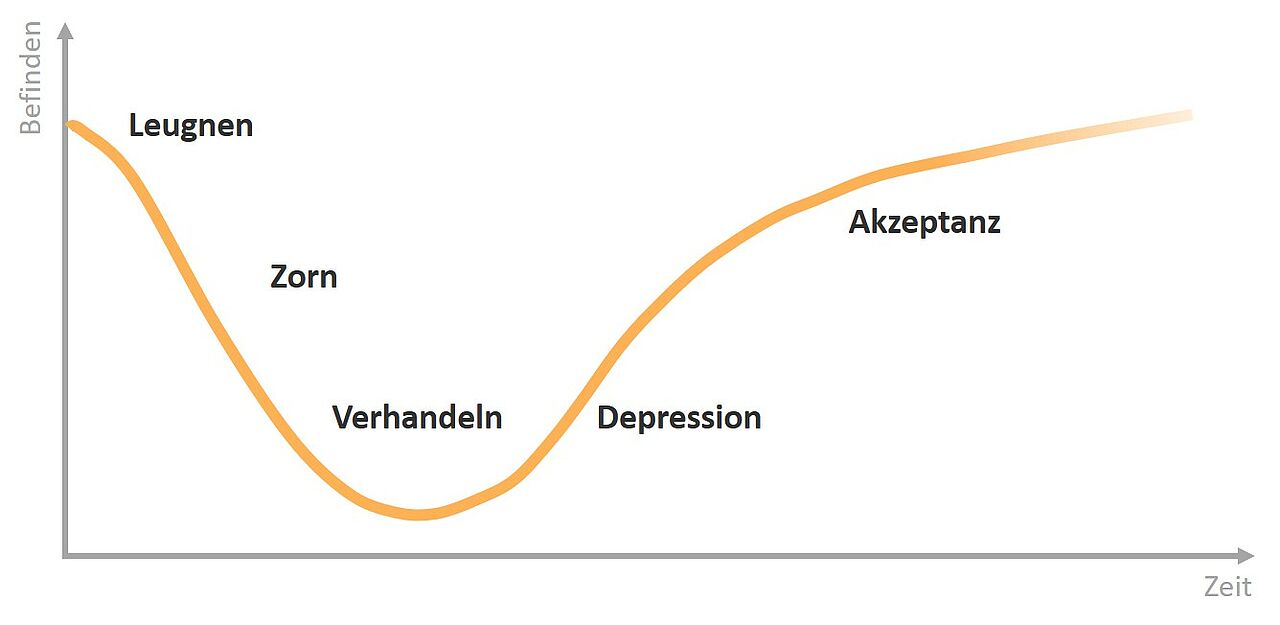
Die ChangeKurve Warum ein Modell zur Sterbebegleitung in der Organisationsentwicklung Einzug
The Kübler-Ross Change Curve™, also known as the Kübler-Ross Model, is an effective tool business owners and managers can use to understand these natural reactions to change. Read on to learn more about the stages of accepting change so you can lead your team toward enhanced productivity and continued success in an ever-evolving business landscape.

Was tun bei Widerstand gegen Veränderungen? Rödl & Partner
The Kübler-Ross Change Curve is trademarked by the Elisabeth Kübler-Ross Family Limited Partnership. You've accessed 1 of your 2 free resources. Get unlimited access. Discover more content. Video. 2 mins. Kotter's Eight-Step Change Model Video. Video Transcript. Actions. Skillbooks. 60 mins. Managing Change.

Von der Kunst, Menschen die Veränderung zu erleichtern
In 1969, Elisabeth Kübler-Ross described five common stages of grief, popularly referred to as DABDA. They include: Denial. Anger. Bargaining. Depression. Acceptance. A Swiss psychiatrist, Kübler-Ross first introduced her five stage grief model in her book On Death and Dying. Kübler-Ross' model was based on her work with terminally ill.